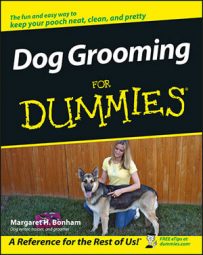Regular brushing and combing helps keep your dog’s coat and skin healthy and looking good and to get the full benefits, you need to brush all the hair and not just the top coat. The most common brushing method is to brush backward against the lay of the fur and then brush it back into place. Brushing that way usually loosens and removes dead hair and stimulates your dog’s skin.
Breeds with corded hair, in particular, just can’t be brushed backward, so brush with the grain and remove all the tangles as you go.
In brushing your canine companion, whether you go from tail to head or head to tail is entirely up to you. Just start at one end and work your way to the other to be sure that you don’t miss anything in between. These steps start at the front, but you can easily reverse the order:
Start brushing at the top of your dog.
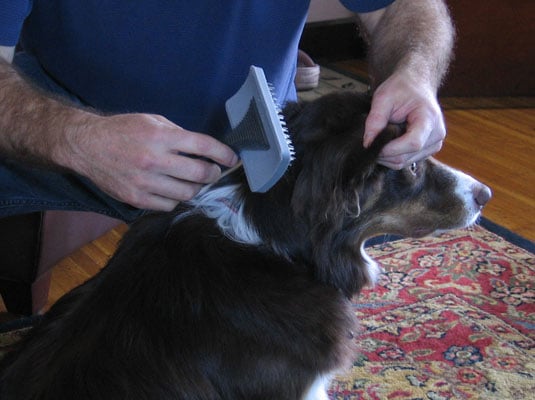
The key in grooming the head is being gentle. The skin and hair around a dog’s face are particularly sensitive and you need to take care not to harm eyes or ears.
If your dog’s coat or the hair on her face is short, use a soft slicker made specifically for the face. If your dog has long facial hair — a fall over the eyes or a beard — put your fingers behind the long hair and gently comb it out so that your dog’s sensitive skin is protected from the sharp, pointed teeth of the comb.
Tend to ear hair carefully.
To groom long ear hair, put your hand between the comb and your dog’s tender skin. If the ear fur is matted or in knots, use a washcloth dipped in detangler solution to slowly comb out the tangles. If the knots of ear fur are too big, (many dogs get them behind the ears), use electric clippers (sliding your hand between the skin and the clipper) to remove them or just ask a professional to do it for you to avoid cutting the skin.
Smooth your dog's neck ruffs.
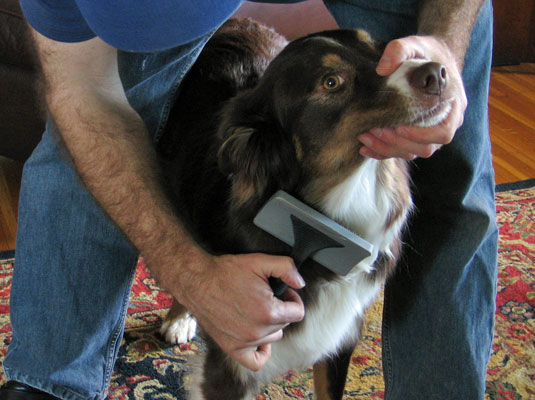
Start brushing with a soft slicker. If your dog has a ruff (the longer, thicker fur around the neck, shoulders, and chest), use a comb or undercoat rake. Comb through the hair you just brushed before brushing it back the way it should lay.
Feather pup's forelegs.
Short hair on a dog’s forelegs usually doesn’t need to be brushed, but if your dog has feathering — long hair on the backs of the legs that runs from armpit to paw — you have to comb it out as has a tendency to tangle more so than the rest of your dog’s coat. Use a detangler solution or a mat splitter or mat comb as necessary.
Go gently on the soft underbelly.
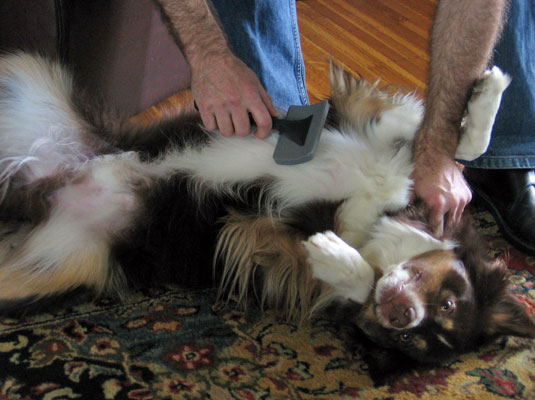
Use a slicker to brush against the lay of the hair (if appropriate — otherwise, brush with the grain) on Fido’s chest and belly, being keenly aware that your dog’s underside is sensitive, especially around the belly and private parts.
Don’t pull on any mats on your dog’s sensitive underbelly, and don’t use a mat rake —one slip can cause problems. Instead, have a professional groomer remove any mats in this region.
Move around the sides and up the back of your pet.
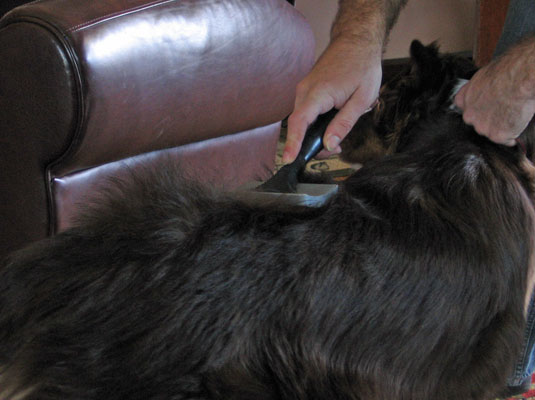
There are probably the easiest areas to groom, you brush against the lay of the fur as appropriate and follow up with a comb over.
Now head for doggy's rear end for more grooming.
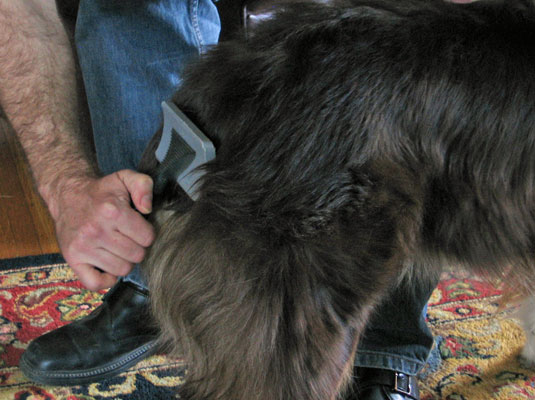
Use a slicker brush to find out how tolerant of being touched on the rear, as this can be a sensitive area. Do a regular brush and comb being extremely careful around the base of the tail near the anus and around the dog’s, um, equipment.
Catch the hind legs for a quick brush up.
Like the forelegs, your dog’s hind legs shouldn’t require much brushing, but if your dog has feathering, you have to comb it out. If your dog isn’t a show dog and has feathering down her back legs, you can use an electric clipper with a guarded blade to keep it neat.
Tweak the tail.
If your dog’s tail is short, fuggetaboutit! But, if it’s long and furry, you need to use a comb. For mats, use detangler solution and a mat splitter or mat rake.

